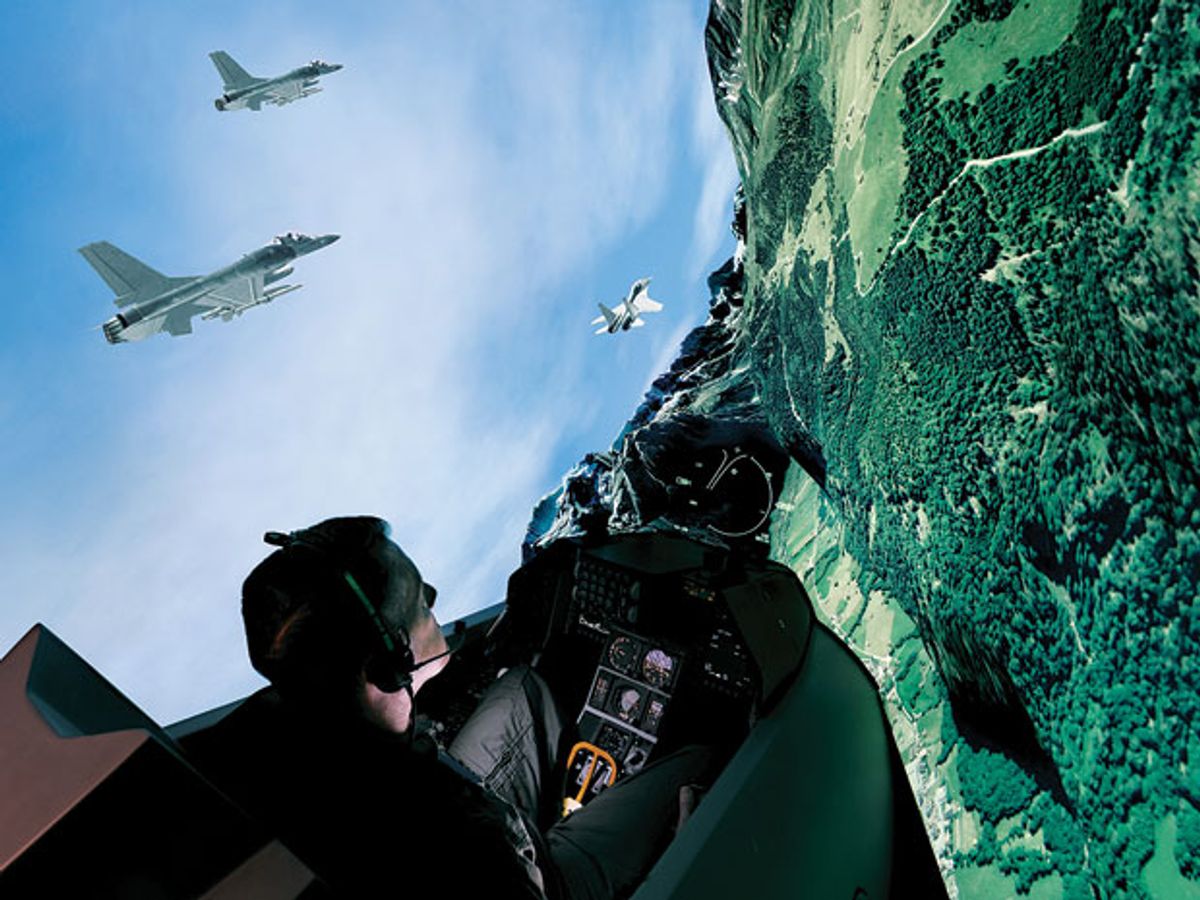Flying combat missions in a jet fighter requires reflexes that can respond to challenging terrain, shifting mission objectives, and hostile forces. Danny Jones is helping U.S. Air Force pilots develop those reflexes by building perhaps the most advanced military flight simulator in the world.
Jones is the systems architect for the F-16 Mission Training Center (MTC) simulator built by L-3 Link Simulation & Training, headquartered in Arlington, Texas. The MTC was first employed by Nellis Air Force Base, in Las Vegas, in February 2012, and it has since been rolled out to several more bases in the United States and overseas. Each MTC can accommodate four pilots simultaneously, and all of the MTCs can connect with each other for large-scale networked virtual training exercises.

As the United States increasingly fights in cities and towns, “the idea is to aid the pilot in immersion in a dense urban environment and provide a more realistic view of what they would see in an actual flight," says Jones.
Simulator training enables more flying practice and per-session combat training exercises at considerable savings. It costs about 97 percent less per hour to operate an MTC than to actually fly four F-16s. Not least are the savings on wear and tear: Each MTC is expected to last 20 years, but the aircraft's service life is limited to 12 000 flight hours.
The MTC system advances the state of the art through sharper visuals, more realistic city landscapes, and artificial intelligence–controlled vehicles and pedestrians that react to the aircraft and each other. Each MTC is powered by a combined total of 440 servers. The simulators re-create the F-16 cockpit, tactical controls, vibrations, and visuals on a 360-degree, 18-facet domed display.
The system also simulates views coming through infrared and low light optical sensors, as well as night-vision goggles. The latter required the particularly complicated task of replicating their imperfections, such as depth perception loss or light blindness when firing weapons. “The challenge of simulating night-vision goggles was duplicating the same miscues and effects they would have in the aircraft," says Jones. “That way pilots can learn corrective habits."
Jones earned a bachelor's in mechanical engineering from Mississippi State University in 1984, and he spent his career working his way up in flight simulation systems at companies like Link, Raytheon, Hughes, and now L-3.
“Mechanical engineering gave me a mind-set and process for architecting components and building them over time," he says. “But I liked the flexibility of working in software and being able to create something much faster than working with actual hardware." That flexibility has come in handy when adjusting to increasingly rapid improvements in video and graphics hardware.
“The whole simulation visual capacity technology out there today is moving at an extremely rapid pace, driven to a large extent by the gaming industry," says Dan Kelly, L-3's vice president of Air Force programs. “Fifteen years ago, simulation used to be done with custom products; today it's almost all commercial off-the-shelf."
Currently, the MTC synchronizes the output of more than 100 graphics cards into a seamless scene across the pilot's 360-degree field of view, says Jones. “But instead of flat panels, we're now working on a more streamlined system using curved LCDs or LED displays to create a domelike environment that requires fewer cards, thereby reducing its computational footprint."
The system feels so lifelike, Jones hesitates when asked if he, too, is a pilot. “I'm confident enough to think that I am," he says, laughing. “I've spent enough hours in the simulator that I claim I can fly."
This article originally appeared in print as “Profile: Danny Jones."
